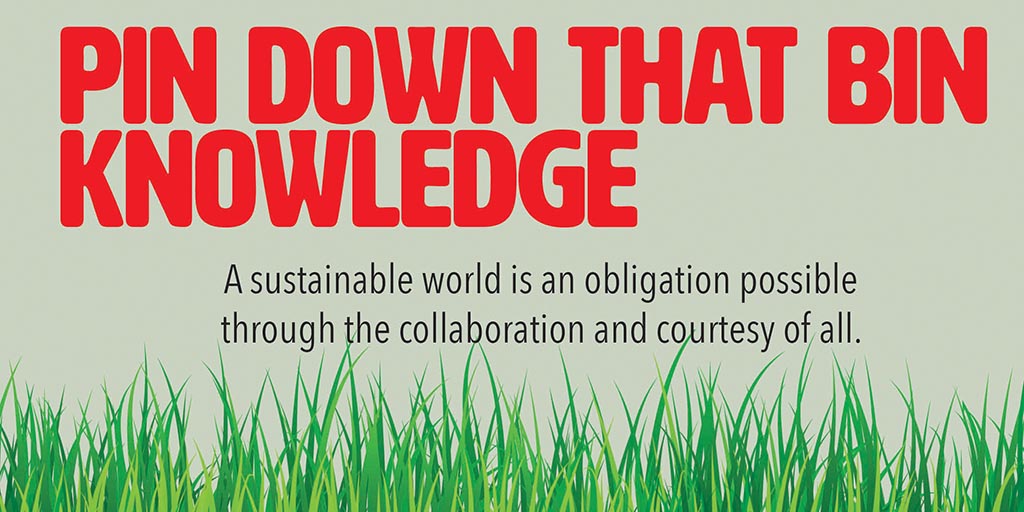Pin down that bin knowledge

Landfills are over-flowing with ever-growing mountains of garbage increasing in size and diminishing the available space to store waste. Even with technological advancements providing eco-friendly alternatives such as solar panels and electricity-powered vehicles, tackling this issue requires taking the problem back to the original roots, and choices that may seem to be minor can be capable of making the biggest difference.
Many students living away from home choose to recycle, but how many of them are doing it right? Each household should have two large blue bins, one designated for paper products and the other for containers.
The paper products that can be recycled include empty boxes of cereal, cardboard, catalogues, detergent, tissue, phone books, egg cartons, miscellaneous sheets such as flyers, envelopes, writing paper, newspapers and magazines.
Container products that can be recycled include ice cream tubs, milk and juice cartons, drink boxes, cardboard cans, aluminum and steel containers, aluminum foil, pie plates, glass bottles and jars as well as any plastic bottles and tubs with number 1-7 noted at the bottom of the container.
Some products that are not accepted include construction paper, drinking glasses and dishes, paper tissues, Styrofoam, wood, plastic bags and wraps, batteries and coat hangers.
In order to make the recycling process go as smooth as possible, make sure to rinse all items, flatten cardboard, set bins/recyclables at curbside by 7 a.m. on collection dates, with bins weighing no more than 18-kilograms.
A thorough list of the accepted items can be found online at london.ca, and non-acceptable items must be discarded in garbage bags for removal or donated to a recycling centre. Changes may be made to the government’s discretion and households are encouraged to keep up to date with modifications.
Another great method to recycle is the LCBO Bag it Back program. In 2007, the government of Ontario developed a plan that would expand recycling programs by freeing up space in blue boxes. Returning wine and spirit bottles to The Beer Store diverts these items to recycling facilities rather than to already full landfills.
What’s better, under the Ontario Deposit Return program, residents are given money back per bottle. In this case, it really does pay to drink, while reducing the amount of waste each year. For a full list on eligible items and return rates, head to bagitback.com.
With hopes that this article was capable of providing new information to help students create a greener planet, the Black Eyed Peas may finally get their answer to their question, “Where is the love?” A sustainable world is an obligation possible through the collaboration and courtesy of all. Further questions may be answered on the “Garbage and Recycling” section on london.ca













